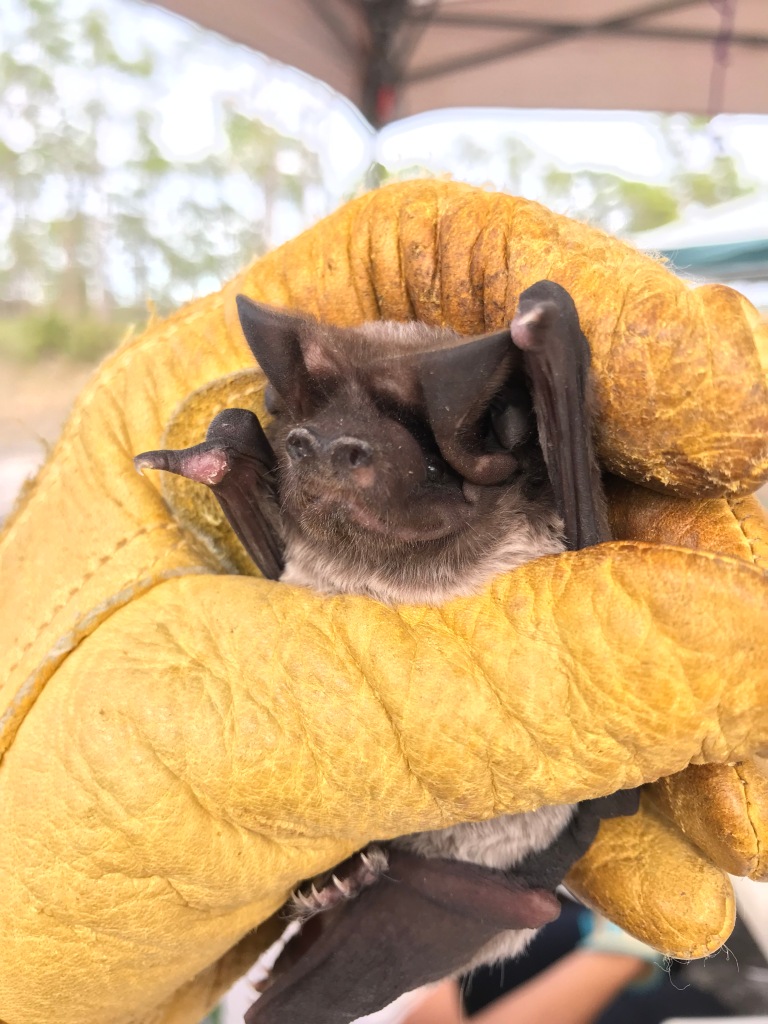
Author: Greg Thompson
Researchers in Archbold’s Avian Ecology program have been studying the habitat and management needs of Red-cockaded Woodpeckers at the Avon Park Air Force Range since 1992. Throughout their range, researchers have focused on how management can save this species—and this management has been successful: the Red-cockaded Woodpecker was recently down-listed by the federal government from Endangered to Threatened status. However, studies of how to save this unique bird have also provided lessons that it is an effective conservation partner, and that, in their own unique ways, the woodpeckers help manage the forests to the benefit of many other species.
Red-cockaded Woodpeckers exist only in high-quality yellow pine forests—in Central Florida these are Longleaf Pine and Slash Pine. The forests must contain old-growth trees suitable for the birds to excavate their nesting cavities, and the forests must be burned frequently (every 2-4 years) to maintain the grassy understory the birds prefer and to prevent oaks and other hardwood trees from crowding out the pines. Archbold research assistant, Greg Thompson, notes, “Because Red-cockaded Woodpeckers have such high standards for their pine habitat, their presence in an area is a sign to us that the habitat management is working.” Pine habitats in good enough condition to support Red-cockaded Woodpeckers are suitable to support many other species as well. In this way, the woodpeckers are considered an indicator species, or a species whose presence or absence is an indication of the condition of the environment.
Not only do the woodpeckers help researchers evaluate the success of their habitat management efforts, they also inadvertently create habitat for other species. Red-cockaded Woodpeckers excavate cavities in living pines for roosting and nesting. Many other species also rely on these cavities for shelter or nesting, and some are even incapable of making their own. With so many animals needing cavities and so few animals that make them, the cavities created by the Red-cockaded Woodpeckers are in very high demand. Because of its role in providing homes for other animals, the Red-cockaded Woodpecker is referred to as a keystone species. The part they play in the ecosystem is particularly important to the welfare of many other species.
Some species prefer Red-cockaded Woodpecker cavities just the way the woodpeckers created them. Eastern Bluebirds, Southern Flying Squirrels, Corn Snakes, Barking Treefrogs, and many different insects are small enough to fit inside an unmodified Red-cockaded Woodpecker cavity. Other woodpeckers, such as Red-bellied Woodpeckers, Northern Flickers, and Pileated Woodpeckers must expand these cavities to make them suitable for their larger body sizes. These enlarged cavities can, in turn, be used by a different set of species, including Eastern Screech-Owls, honeybees, and various bats.
One particularly noteworthy species discovered recently to use Red-cockaded Woodpecker cavities at Avon Park Air Force Range is the Florida Bonneted Bat. These bats occur only in the southern half of Florida and are among the most Endangered mammals in North America. The population at the Air Force Range was first discovered in 2013 when an Archbold researcher was conducting the annual census of Red-cockaded Woodpecker cavities. It was the first known natural roost site for this rare bat—all other known roosts were in man-made structures. A total of five bonneted bat roosts have been discovered at the Range, and four of those are in woodpecker cavities. According to Kristopher Pitcher, biologist with the U.S. Fish and Wildlife Service charged with monitoring the bat population at the Range, “Florida Bonneted Bats at the northern extent of their range at Avon Park Air Force Range seem to be almost completely reliant on abandoned, natural Red-cockaded Woodpecker cavities in older Longleaf Pine trees that exhibit hollow cores due to heart rot. In short, without Red-cockaded Woodpeckers creating cavities, Florida Bonneted Bats at Avon Park would likely have no ‘front door’ to access their roosts in hollow Longleaf Pines.”
Archbold’s research focus on this keystone species has enabled significant progress towards the overarching goal of preserving biodiversity in general. It is a cross-species collaboration; biologists and Avon Park Air Force Range land managers ensure that Red-cockaded Woodpeckers have what they need to thrive, and the woodpeckers help to ensure that other species dependent on cavities have what they need for their survival. Pine forests in which Red-cockaded Woodpeckers still occur, like those at the Avon Park Air Force Range, are extremely valuable and must be protected and managed to benefit the woodpeckers and all the inhabitants of their ecosystem.

